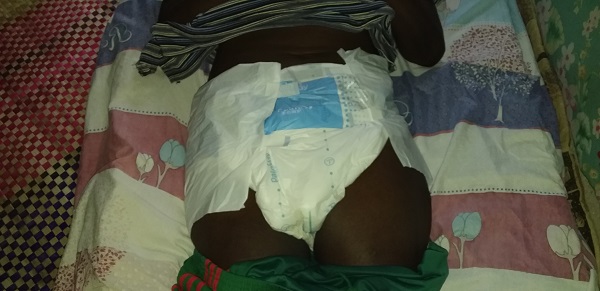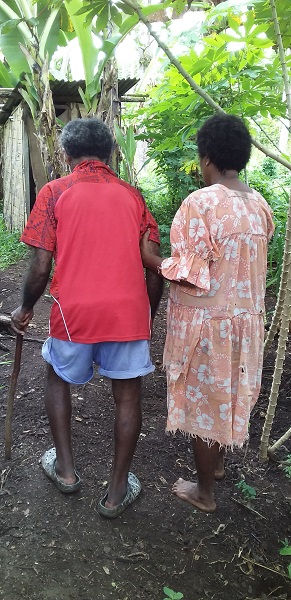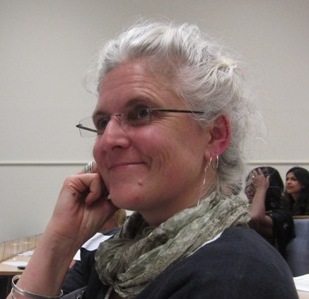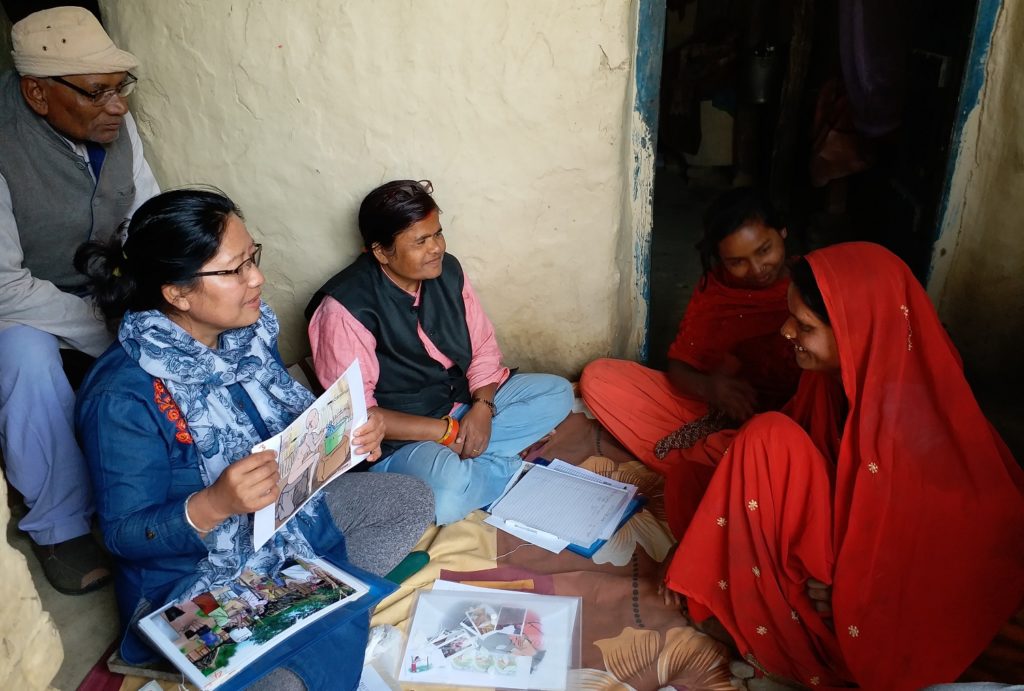In this blog I share some innovative approaches used for inclusive learning with communities by organisations working on sanitation and hygiene. It draws on a recent topic exploration study and summary learning shared in an associated learning paper and learning brief (forthcoming) I wrote on “Learning in the sanitation and hygiene sector” for the Sanitation Learning Hub. It is the second blog in a five part series following on from blog one: “Learning about learning” in the sanitation and hygiene sector.
It is clear that people in communities are experts in their own situations. A range of learning and research methods currently used (with varying frequency) by sector actors to learn from communities, include for example:
- focus group discussions;
- in-depth interviews;
- household surveys;
- transect walks and observations;
- urban consumer surveys/user satisfaction surveys;
- and GPS based survey mapping.
However, there can still be blind spots when using these approaches, and we can still be weak on really listening and learning from people from within communities, rather than basing our conclusions on our own assumptions or biases. A particular weakness in the sector’s work is how much effort we put, or should I say, don’t put in, to learning from a diverse range of people, including in particular people who may be most disadvantaged at community level; with the tendency to instead focus mainly on those who speak easiest or the loudest.
In this blog I highlight innovative, largely participatory approaches, which stood out in this study as having a strong potential to add to current methods to learn from communities in ways that can be inclusive, respectful and effective.
1. Photovoice
Photovoice is a method in which community members are trained to use a camera and asked to take photos to tell their story around a particular issue. It is their choice which issues they prioritise, rather than the researcher, which can lead to very interesting findings. It offers an opportunity for participants to express themselves using visual images rather than through words.
WaterAid and the London School of Hygiene and Tropical Medicine used this technique to learn from adolescent girls with intellectual disabilities in Nepal on the management of their menstrual hygiene, which can be seen here.
Zara Atari also used it for her MSc project, which learnt from people with disabilities in Pakistan living with incontinence, on their experiences of living with incontinence. This is where they cannot control their urine or faeces and are at risk of leaking and soiling their clothes, seat or bedding. Through photos they shared their loneliness as friends no longer wanted to spend time with them because of the smell of urine and faeces; they shared the struggles of their carers who suffered with back pain from lifting them; they shared the need for much more soap and water; and the problems they have with insects crawling over them. Images from her study can be found in the case studies document here.
Dr Amita Bhakta, who also used this approach for her PhD research on WASH for perimenopausal women in Ghana, has also recently been learning more about this approach. You can read her latest SLH learning paper ‘Uncovering WASH Realities through Photovoice’, which provides an overview of photovoice methodology, lessons learnt from previous projects and how it could be used to explore new frontiers in WASH. This learning paper features a project by Jane Wilbur, Islay Mactaggart and team (2019) who used photovoice to explore disability, MHM and incontinence in Vanuatu.
Below is a photo by Edline who took part in the project. She is unable to sit up independently out of bed so is reliant on a her daughter-in-law for toileting and personal hygiene. She also experiences incontinence. In Vanuatu, a daughter-in-law shouldn’t be overly personal with her mother-in-law, but as Edline only has a son she has to break that custom. Below this is a photo by Fred who also participated in the project. Fred is an older man, who has a disability and experiences incontinence. He needs support to reach and use the toilet as it is inaccessible and he has no mobility assistive devices.


2. Immersive research
Immersive research is an anthropological methodology, where the researchers or practitioners spend 3, 4 or more days living in a community and interacting with people. Useful for providing the ‘a-ha!’ or ‘lightbulb’ moment for those involved of the realities of communities and their sanitation and hygiene practices, including learning from people who may be most disadvantaged. It’s an opportunity to ‘ground-truth’ (triangulate from the realities on the ground) the common beliefs of what is happening in the sector. Robert Chambers’ explains more on ground truthing in his book ‘Can we know better? Reflections for development.’
The value of the immersive research has been noted as:
- It helps the researcher move away from the official narrative and be more open to really listen to the community members.
- It illuminates connections between findings found through other methods; and allows the researcher to observe the complexities of intra- (between) and inter- (inside) households and community dynamics, as well as offering opportunities to triangulate information.
- It allows people to approach the team, rather than the other way around, and to have the opportunity to discuss sometimes more private or sensitive methods, than may be possible with other methods.
- It provides a more accurate description of what is happening in relation to OD than can be obtained through a survey – often the teams sit outside the houses and see people with water containers going to the field to defecate, which may be different from the official narrative.
(Institute of Development Studies, Praxis and WaterAid (2017))
The Sanitation Learning Hub, WaterAid, PRAXIS, the WSSCC and students from a university in New Delhi undertook immersive research on sanitation in India. With this method the researchers lived within the communities for four days and three nights and had open conversations and made observations. They then reflected back as a group at the end of the process as to what has been learnt. Read the main report from this study, a policy and practice note and a methodology.
3. Child-led evaluations – “Turning a lizard into a cow”
Plan supported a series of three child-led evaluations of their ‘building skills for life’ programmes in Cambodia, Zimbabwe and Kenya (this programme was outside of the WASH sector). They supported children to be the evaluators and to evaluate the programme in their communities. The aim was to empower the children to obtain the feedback from their communities and make recommendations for going forward, whilst at the same time giving an opportunity for the children to gain skills and confidence. A range of participatory tools were developed for use during the evaluation such as:
- ranking of barriers;
- who carries the biggest burden exercise;
- confidence snails;
- a daisy exercise for ranking importance of issues;
- and body mapping.
This method puts the lead for the learning into the hands of a particular group within the community. The approaches need to be developed with the particular evaluator group in mind. It can lead to interesting findings that may not have been considered. This is also an example of putting ‘Nothing about us without us!’ into practice. It could be a useful approach, to enable groups of people who may not usually have their voices heard at community level, such as children or adolescent girls or boys, to have a greater role in analysing what has been happening in their communities. It could also potentially be used by people living with disabilities or older men or women, to also understand their perspective, if the tools were adapted to them.
Read more about these child-led evaluations here: Zimbabwe; Cambodia; Kenya
4. WASH-Em Tools
The Wash’Em approach has been developed by the London School of Hygiene and Tropical Medicine (LSHTM), CAWST (Centre for Affordable Water and Sanitation Technology) and Action Contre la Faim (ACF), in an effort to improve the consultation processes with communities and strengthen the design of hygiene promotion interventions in emergencies. The tools involve a series of simple images, checklists and notes and an on-line system of analysis to make programme recommendations. The Rapid Assessment Tools have been designed to be simple to use, in a short time-frame. Each of the five tools explores different elements of behaviour and the experiences of crisis-affected populations. This includes understanding how the physical environment can influence behaviour, how people’s lives have been affected by the crises, understanding people’s motivations and risk perceptions, and exploring the population’s preferred delivery channels.
The team developing the tools also found that showing the tools in action and the recommendations through videos, were quick ways to help people engage. But not all humanitarians have access to good internet, so simple two-page briefs were also needed. In terms of training materials, they found that a deck of PowerPoint slides was the most useful tool with associated notes. Training session plans are also made available. By providing simple tools to strengthen the ability of frontline staff to strengthen the consultation process in the early stages of an emergency, this approach can offer the opportunity to target particular groups of people who may be most disadvantaged, to obtain their opinions, insights and needs. To do this the users of the tools need to proactively seek out these groups of people and listen to their views.
Click here for an introduction. Click here for the tools.
5. User-centred design and SaniTweaks
User-centred design is being increasingly promoted for use in humanitarian contexts. It involves the key users in the design and feedback of prototypes for influencing subsequent designs. Involving the users in the designs of facilities offers an opportunity to make sure that the views of different groups within a community are sought and then integrated into the design, hopefully resulting in facilities that are more suitable to their needs. An example of how user-centred design processes were used in the WASH sector is a project called the ‘Social Architecture Project’. This was facilitated by Oxfam as part of the Rohingya humanitarian response in Bangladesh, to involve women in the design of WASH facilities. The first report can be seen here.
Oxfam has also been working to try to build understanding and capacity to strengthen consultation processes related to WASH facilities in all humanitarian responses, as an ongoing and not a one-off process, including in particular how to involve women and adolescent girls, but also to consider the needs of other users. This is being done through the SaniTweaks approach.
It is critically important to also start involving other groups of people in user-centered design processes as a standard part of all humanitarian responses, including in particular older people and people with disabilities, who often face particular difficulties in accessing and using standard communal toilets, bathing facilities and water points. For clear examples of the challenges that are being faced by different people within communities as part of a humanitarian response, where people who may be most hidden and disadvantaged have been mostly overlooked (including people with disabilities, older people, women and girls), even one year after the start of the emergency, highlighting that the consultation processes need significant improvement, see the following reports: Main Gender, GBV and Inclusion Report of the work of the WASH sector in the Rohingya humanitarian response; or the Summary Report.
6. Doing No Harm when learning from people who may be most disadvantaged
Care is needed when undertaking any form of work in communities, particularly when working with people who may be most disadvantaged.
The Global Sanitation Fund of the WSSCC, which is a pooled funding mechanism, undertook a review in 2016/17, of the way equality and non-discrimination (EQND) has been considered in the 13 country sanitation programmes that it funds. One of the priorities was to meet with people who may be most disadvantaged in communities and to hear from them their experiences and their recommendations as to how the programme could be improved. As a result, a handbook has been developed by the WSSCC to support the programmes to strengthen in this area. This is also being supported with trainings.
One of the key findings of the EQND study was that we need to be aware of ways that we can inadvertently cause harm in the process of sanitation programmes, and to raise awareness and identify approaches to minimise this happening. In addition, the approaches and tools that were used during the 13-country study to reach and speak with people who may be most disadvantaged, including those related to ethics and doing no harm, were developed further into a guide as a resource for the country teams to use going forward. This includes a number of tools such as pictorial gender and inclusion analysis, exercises for children and facilitation exercises to use with the field teams.
More recently, the COVID-19 Hygiene Hub has also featured an article on community engagement during the COVID-19 pandemic also with links to lots of useful general resources. One of the useful short videos shared on this site is by Oxfam on the gaps and need for improved community engagement in WASH in humanitarian contexts, including in particular to consult with people who are often otherwise overlooked.
7. Other approaches and tools
A range of useful tools developed by WaterAid and WEDC to promote more effective social inclusion can also be found here: Social inclusion tools for WASH. This includes tools such as those showing how to apply the ‘social model of inclusion’ to WASH, barrier and solution analysis and accessibility and safety audits.
There are also a great series of individual tools are also available in two publications: Participatory Learning & Action Tools published by the IIED, and Listen and Learn: Participatory assessment with children and adolescents published by UNHCR.
Participatory video is another tool that is also being used in other sectors to work with people who may be disadvantaged, to help form groups to raise voice, increase visibility and help ensure their inclusion in programming and policy. This approach also encourages community members to become participatory video facilitators, in order to embed the learning within the community and encourage further participatory learning and research.
However, there are multiple issues around the ethics of ownership of videos and consent from the people in them for the videos to be used, so learning would need to be undertaken on these issues, before this approach is widely adopted. As yet this approach has not been notably used in the sanitation and hygiene sector, but we could learn from this project Participate: Knowledge from the margins for the SDGS.
Want to read more about learning in the sector?
Undertaking the rapid topic exploration study ‘Learning in the sanitation and hygiene sector’ was also a great opportunity for me to learn about learning – you can read more about the motivation and process behind the study in this first (short) blog here.
In addition, three forthcoming blogs in this series on learning in the sanitation and hygiene also look at:
- Learning peer-to-peer in the sanitation and hygiene sector.
- The barriers that prevent us learning and translating it into action at scale.
- Ideas for strengthening learning and its use at scale.
Two documents which summarise the key learning from the study were also prepared: Learning paper and Learning brief (forthcoming).







